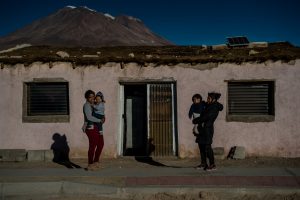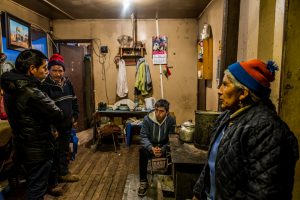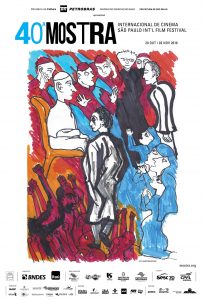We started class on Wednesday by clarifying that we need sign up for Wikipedia as soon as possible, and that we will be having our Map Quiz at the beginning of class on Monday, September 4. Alberto presented his Latin America in the News post, which dealt with the Guarani people of Paraguay, and a recent celebration to help promote and celebrate diversity.
Afterwards, we identified various popular terms used for referring to the indigenous populations of the Americas (Indian, Native American, First Nations) and recognized that it is important to refer to groups of people/individuals as they want to be identified. In addition to this, it is important to recognize what these phrases can’t do; when looking at this history of colonialism, we need to understand that there is a huge amount of cultural and linguistic diversity. If an observer thinks about the history of colonizing Latin America as only two populations, Indigenous Latin Americans vs. Spanish Invaders, the history will not be easily understood.
After this discussion, we were split into groups for the rest of the class. The first topic was looking at why we chose certain areas of Latin/South America as likely to be inhabited. After talking among ourselves, we created a class list of important influences for deciding where large civilizations can form; access to waterways for transportation/trade, access to fresh water, the right amount of rainfall, flat land, non-extreme temperatures, and the ability to grow a surplus of food so people can contribute labor towards anything other than agriculture.
This was how we discussed the importance of environment, as environmental factors are what determines where large groups of people can live/gather. The environment determines what indigenous/Spanish populations could interact and at what historical moments. We didn’t necessarily quote any specific passages when discussing this, but the discussion relied heavily on the maps provided for readings and Bauer’s analysis of the environment’s importance in the development of history throughout the world (16).
After this, we moved on to collectively define Material Culture. Values are assigned to goods, imprinting societal values onto physical objects. They become valued outside of their pure economic value. These objects are used to define a community’s/individual’s culture; what does a particular object’s presence mean/represent? What does an image seen on repeated pieces of pottery in a specific region mean? This method is incredibly useful when looking at the remains of a civilization, as it displays the relationship between the society and nature, how leisure time was spent, how race & gender manifested, and much more. Food in particular is an incredibly significant aspect!
Links
I’ve found two links by the historian Jared Diamond that deal with his theory of the environment’s role in the formation of civilizations, one addressing his original formulation of the theory and another applying his own theories to the current global climate. I’ve also found an article that works to apply theories of Material Culture to the contemporary production of art in Michigan.
Potential Exam Questions
- Imagine you are researching the remains of an ancient culture, and you’ve noticed that one particular type of object has been found multiple times throughout the site. What conditions would help you determine the role that they played in this society?
- Are there any other non-human factors, other than the environment, that need to be considered when determining where civilization can thrive?
- Try applying the idea of material culture to contemporary American society: What will future historians think our cultural values were by looking at American currency?



